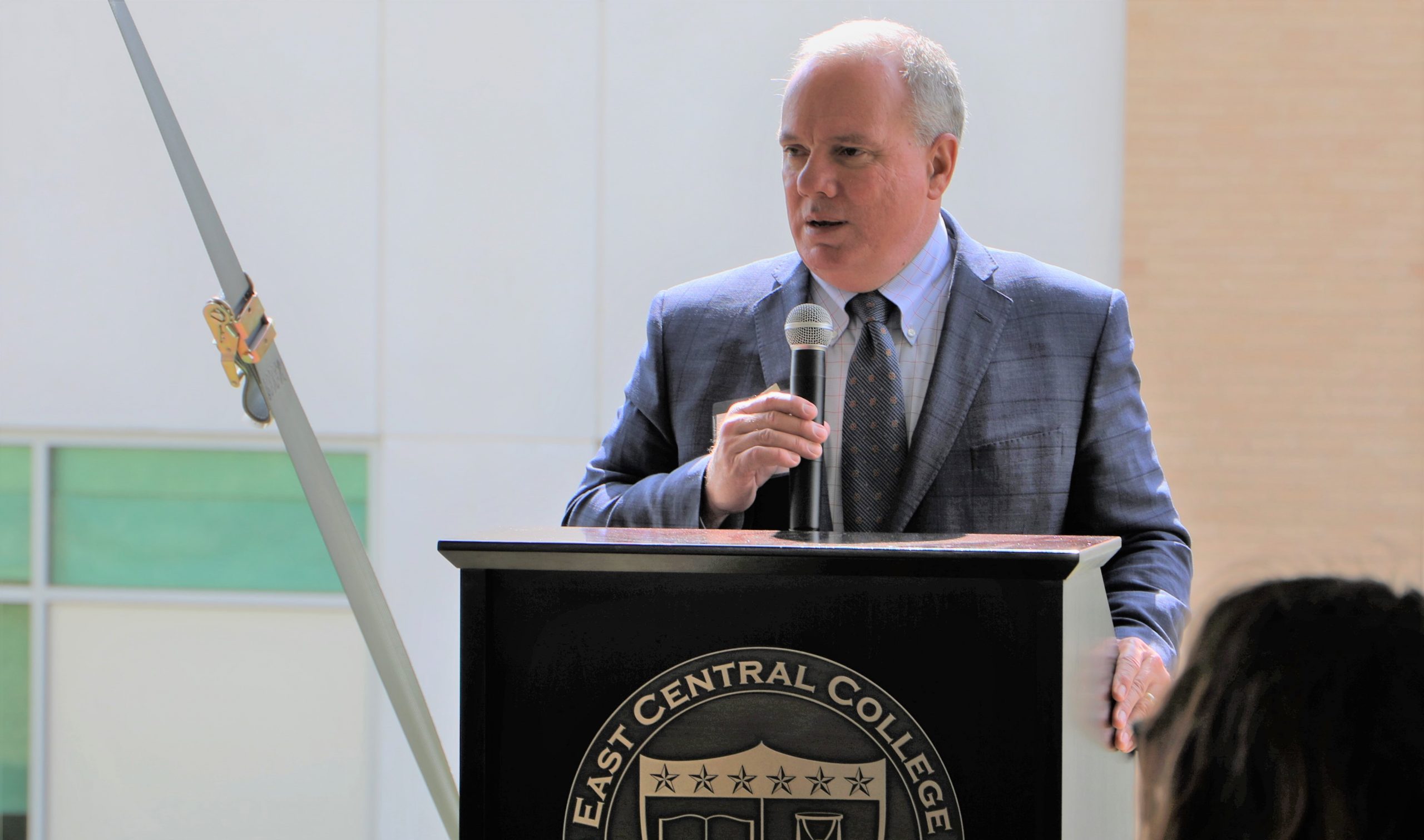
Community College Month—Op-Ed
Jon Bauer, Ph.D.
President, East Central College
The trophy sits on a shelf in my mom’s bedroom. Only recently have I noticed that it resembles an Academy Award, with a gold-plated graduate standing on a pedestal in place of Oscar himself. The graduate wears a dress, a fitting tribute to the class valedictorian. Today—decades later, and after a few dents and dings picked up along the way—the award still represents the best academic performance of that year’s graduating class.
Mom chose this for her valedictory theme at commencement: “There is no security on this Earth, only opportunity.”
A moment in time, but times were different. Going to college—even for the class valedictorian—was no easy task. That was especially true for a young woman from a poor family. There were few scholarships, no federal assistance, and in Mom’s hometown there was no community college. So, after a taste of college, she went to work and raised a family.
Today, the opportunities to go to college would be plentiful. Assistance based on both merit and need would ensure the path a college campus. And today, a community college would likely be serving the Ohio county where Mom graduated.
April is national Community College Month, a time to honor our colleges, our students, and our faculty, staff, and trustees. It is also a time to reflect on the difference these institutions have made for generations of students.
Community colleges are uniquely American. Our oldest colleges were private institutions that replicated those found in Europe. Starting with Harvard, these colleges were places of learning and privilege. Men attended in preparation for life in the landed gentry or clergy. Eventually we adopted the university model, both public and private, derived from Germany.
But around the turn of the 20th Century, University of Chicago president William Rainey Harper proposed the notion of the junior and senior college, the former representing the first two years of a college degree. His idea first took root in Joliet, Illinois, with six students taking classes at the country’s first junior college.
Over the next several decades hundreds of junior colleges came and went. They were mostly extensions of high school. President Harry Truman first called for the development of a system of community colleges in 1947; he was also the first national figure to use the term “community college” in lieu of “junior college.”
In 1960, most communities were without a college of their own. That was true in Mom’s hometown. But that was about to change. States had taken up the challenge from Presidents Truman and Eisenhower and had begun to establish publicly-supported community colleges from coast to coast. At one point in the Sixties we were opening a new community college at the rate of one per week.
East Central College was part of this generation. Local leaders recognized the need for a community college to serve the students of the region and, in 1968, voters approved the creation of East Central Junior College.
We have come a long way in our history. Joliet Junior College—starting with those six students in 1901—serves over 30,000 today. East Central serves thousands of students each year. ECC’s students include juniors and seniors in our Early College Academy. They will graduate from college a few weeks before finishing high school. We serve those right out of high school, as well as those who have been away from a classroom for years, even decades.
Our colleges still serve the student who plans to transfer—Harper’s junior college model—at a fraction of the cost. And we serve those looking to go right into the workforce. These students include nurses, machinists, technicians, and chefs. Over time our mission has grown to serve those already employed, but in need of additional skills. ECC’s Center for Workforce Development works with companies throughout the region.
The Truman Commission called for the first two years of college to be free to students, just like high school. As a nation we are still working on “free community college,” but in Missouri those with the A+ benefit can attend a community college tuition-free. Around 90% of our full-time students have some sort of scholarship or assistance, and the neediest students qualify for the federal Pell Grant. At a community college, the Pell Grant will cover a student’s tuition, fees, and most additional costs like books. For many, it is the jump start to college.
Not only do students have a local, affordable option, but one marked with quality. Our transfer students have high GPAs at their next school. Those going to work often have jobs waiting for them once they graduate. Our faculty are experienced in the classroom, working at teaching-centered colleges. We are much more than the low-cost provider.
Today, more than four out of ten undergraduate students attend a community college.
Community colleges are no longer a novel idea; we are part of the fabric of our communities. We have been around for generations and will be around for generations to come. We are one of America’s best ideas.
Back in Mom’s hometown, a community college came to the area more than a decade after she graduated. Would she have been one of Southern State Community College’s students had the timing been different? I have no doubt. And they would have rolled out the red carpet. That’s what we do at community colleges.
In a few weeks we will graduate another class of East Central College graduates. And coming right behind them will be a new group of students with their own stories, dreams, ambitions, and awards. They will be ready for their best performance. And we will be ready for them.
Opportunity indeed.
